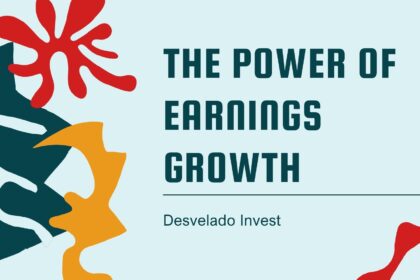Value investing is a strategy that involves identifying undervalued stocks trading below their intrinsic value. This approach focuses on long-term growth potential and seeks to capitalize on market inefficiencies
This is Demo Content and not to be considered part of site’s intended content and policy.
A Comprehensive Guide to Value Investing
Value investing is a financial strategy where investors look for stocks that appear underpriced relative to their intrinsic value. This approach is based on the idea of finding bargains in the stock market, akin to buying quality merchandise when it is marked down. This article delves into the fundamental concepts of value investing, addressing specific queries and providing a structured approach to understanding this investment philosophy.
What is Value Investing?
Value investing is an investment paradigm that involves picking stocks that trade for less than their intrinsic values. Investors use financial analysis to identify stocks they believe the market has undervalued, essentially looking for stocks that are bargains to buy. The core concept here is that the market will recognize and correct its errors in valuation, eventually leading the stock price to reflect the company’s actual worth.
Value Investing Philosophy
The philosophy of value investing was pioneered by Benjamin Graham and further popularized by Warren Buffett. It is rooted in the idea that the market does not always price stocks fairly, which allows disciplined investors to buy stocks at a discount to their actual value and hold them until their price reflects their real business fundamentals.
The Basics of Value Investing Strategy
At its core, value investing involves identifying companies that have strong fundamentals — earnings, dividends, cash flow, and book value — but are undervalued by the market. These companies are often overlooked or are out of favor in the marketplace despite being fundamentally strong.
What is a Value Stock?
A value stock is typically characterized by having a low price-to-earnings (P/E) ratio, a high dividend yield, and/or a low price-to-book (P/B) ratio compared to industry standards. These stocks are often found in mature industries and may have less growth potential compared to growth stocks, but they provide steady returns and are considered less volatile.
Example of Value Investment
An example of a value investment might be a well-established company in the consumer goods sector that has temporarily underperformed due to market conditions but has a strong dividend history and robust financials, such as Procter & Gamble when its stock is undervalued by the market.
Number One Rule in Value Investing
The number one rule in value investing is to avoid losing money. This principle focuses on risk aversion and emphasizes buying stocks that are not only at a discount but also have a margin of safety, ensuring that the investor is protected against significant losses.
Do Ordinary Value Investors Beat the Market?
While some individual value investors have beaten the market over long periods, it is challenging. Success in value investing requires extensive research, patience, and a good understanding of financial fundamentals. Market-beating returns are not guaranteed, and the strategy demands discipline and a long-term perspective.
Learning Value Investing in the Equity Market
To learn value investing, start with the foundational texts such as Benjamin Graham’s “The Intelligent Investor.” Additionally, following market analyses and earnings reports, and using financial services like Morningstar to understand company valuations can help. Practicing paper trading to simulate value investing strategies without financial risk is also beneficial.
Is Value Investing a Good Strategy?
Value investing is considered a sound strategy for those who are looking for long-term investment opportunities. It tends to perform well in bear markets and provides a conservative approach by focusing on long-term gains from fundamentally strong companies.
How Does Value Investing Fit into a Stock Market Strategy?
Value investing can complement other investment strategies by providing balance and stability. It fits into a broader stock market strategy by allowing investors to purchase stocks that provide safety during market downturns and steady growth in normal conditions.
Is Value Investing a Thing of the Past?
While some critics argue that value investing has become obsolete, particularly in a market dominated by fast-growing tech stocks, others contend that it remains a timeless strategy that emphasizes basic financial principles and disciplined investing.
Are Value Stocks Riskier Than Growth Stocks?
Generally, value stocks are considered less risky compared to growth stocks because they are often more stable, established companies with predictable cash flows and are purchased at a price below their intrinsic values.
Differences Between Value and Growth Investing
Value investing focuses on security pricing inefficiencies and buying stocks at a discount, while growth investing seeks stocks with strong potential for earnings growth regardless of their current price. Growth stocks typically have higher price-to-earnings ratios and expect higher earnings growth compared to value stocks.
How to Start Value Investing
Starting with value investing involves:
- Educating oneself about financial analysis and the stock market.
- Regularly reading financial news and reports.
- Practicing analyzing companies based on their financial health and market valuation.
- Slowly building a diversified portfolio of value stocks.
Value Investors and Black Swan Investing
Value investors often regard black swan events — unpredictable or unforeseen events, typically with extreme consequences — as opportunities to purchase valuable stocks when their prices are significantly depressed.
10 Principles of Value Investing
- Invest with a margin of safety.
- Focus on long-term gains, not short-term fluctuations.
- Choose fundamentally strong companies.
4. Be patient — good investments payoff over time. - Diversify intelligently.
- Manage risk through intrinsic value.
- Understand what you are buying.
- Monitor your investments regularly but not obsessively.
- Learn from mistakes.
- Stay informed and adapt to market changes.
Strategies of Legendary Value Investors
Exploring the strategies of investors like Warren Buffett, Charlie Munger, and Benjamin Graham can provide insights into successful value investing. These strategies often involve meticulous financial analysis, a strong focus on company management, and a commitment to holding investments long-term.
Value Investing History
Value investing has its origins in the early 20th century, with Benjamin Graham and David Dodd pioneering this approach at Columbia Business School in 1928. Their work laid the foundation for what would become a significant investment strategy.
Value Investing: The Back Story
The back story of value investing is deeply tied to the Great Depression, during which Benjamin Graham developed and refined his investment philosophy. This period emphasized the need for investment strategies that provided a significant margin of safety, given the economic uncertainties.
A Guide to Value Investing
To effectively engage in value investing:
- Develop a firm understanding of financial statements and what they reveal about a company’s health.
- Always look for companies with strong histories of profitability and low debt.
- Wait for the right price before buying — do not overpay, regardless of the quality of the stock.
- Keep emotions out of investing — focus on hard data and real value.
In conclusion, value investing is a robust approach grounded in financial fundamentals and disciplined investing. While it requires patience and a conservative outlook, it offers the potential for reliable, above-average returns by capitalizing on market inefficiencies.






